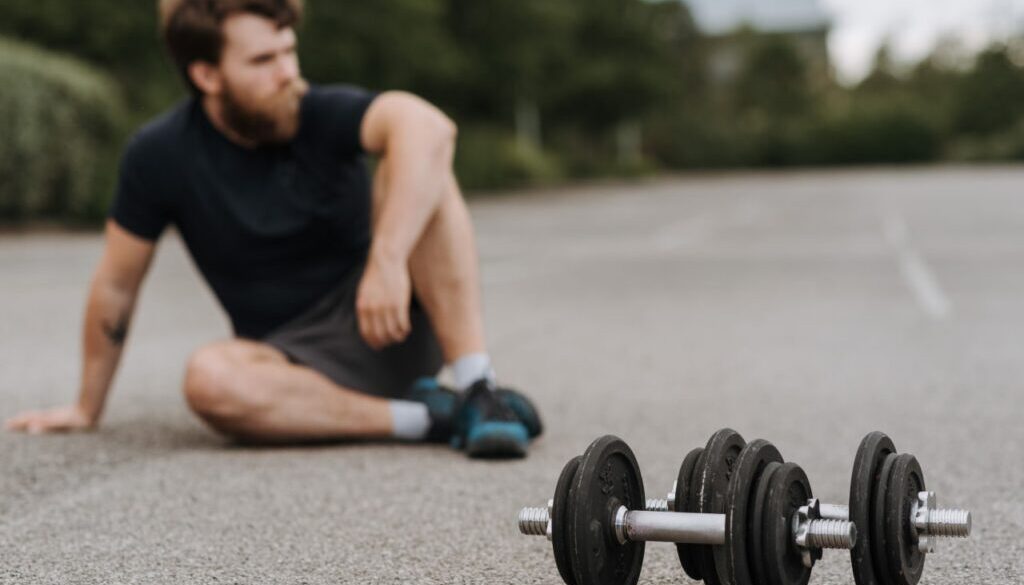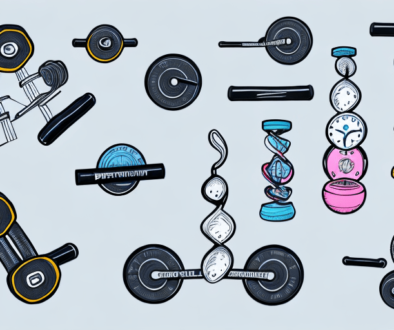8 Proven Tips for Quick Muscle Recovery
We include products we think are useful for our readers. If you buy through links on this page, we may earn a small commission. Here’s our process.
Muscle recovery is an important part of any exercise regimen. If you don’t allow your body to recover, you’re going to run into a whole host of problems.
That’s why we’ve compiled this list of 8 proven tips for quick muscle recovery. These techniques can help you get rid of muscle soreness and pain, prevent overuse injuries, and make sure that your muscles are fully prepared for next time!
The common causes of muscle soreness
The most common cause of muscle soreness is microtrauma, which is the tearing of muscle fibers. Microtrauma can be caused by overuse or sudden exertion.
Overuse-related microtrauma occurs when muscles aren’t allowed adequate rest between workouts (like going for a 10-mile run every other day).
Sudden exertion–related microtrauma occurs when you push yourself beyond your normal limits on a particular day (like running 3 miles instead of 2).
Both types of microtrauma can result in muscle soreness. When you exercise, your muscles are put under stress. This causes tiny tears in the fibres that make up your muscles. Your body repairs these tears during the rest period between workouts.
1. Essential oils for muscle recovery, soreness and pain relief
Essential oils are a great way to help with muscle soreness and pain relief. They have been shown to have analgesic properties which make them useful for treating the symptoms associated with muscle soreness and pain.
Essential oils can be used in several ways:
- Use a carrier oil like coconut oil. Coconut oil is an excellent carrier oil because it’s thick, smells nice, and has moisturizing properties that will help soothe your skin after working out. You can mix a few drops of an essential oil into the coconut oil to create your own blend that helps relieve pain after exercise.
- Mix together different essential oils for complimentary scents (and results). For example, eucalyptus and peppermint both have cooling properties that can help ease muscle aches or pains caused by strenuous workouts; wintergreen has anti-inflammatory effects; lavender calms down nerves that are running on overdrive due to exercise stress; ginger helps stimulate circulation which relieves stiffness in joints (this one is especially good for those who suffer from arthritis).
2. Rest, Rest, Rest
Rest may not be a cure-all for muscle recovery, but it can help you avoid overuse injuries and muscle soreness. The goal of rest is to give your body time to rest and recover from exercise. Rest is different from sleep: resting muscles do not enter into deep sleep stages at all, instead remaining in a state of relaxed readiness for when they are called on again. This allows them to heal faster than if they’re given only the opportunity to sleep off their fatigue.
The amount of time you need between workouts depends on several factors: how much you lifted last time out; what kind of workout it was (strength training or cardio); how long ago your previous session took place; whether there were any other stressful activities involved in that day like travel or work meetings etc., so make sure that you take stock before arranging an intense schedule involving multiple muscle groups in one day!
3. Eat more protein
One of the best ways to promote muscle recovery is by ensuring that you’re consuming enough protein. Studies show that consuming more protein can help with muscle soreness, repair and growth after exercise.
The recommended daily amount of protein is 0.8 grams per kilogram (or 0.36 grams per pound) of body weight, so if you weigh 140 lbs., you would need 64 grams of protein each day. If you’re eating a balanced diet that includes whole grains, fruits and veggies, it’s likely that you’re already getting enough protein in your diet without having to make any changes. But if this isn’t the case, try adding more lean meat (like chicken or fish), low-fat dairy products and beans to meals throughout the week. If you’re still struggling to meet your protein needs, try adding a few scoops of protein powder to smoothies or shakes. This can also help boost muscle growth if you’re working out at home.
4. Epsom salt baths for muscle recovery
If you’re suffering from muscle soreness, consider trying an Epsom salt bath. Epsom salt baths are a great way to relax and reduce pain. They’re inexpensive and can be done at home.
Soak in a warm bath with about a cup of Epsom salts for 15–20 minutes (you may soak longer if needed). The magnesium in Epsom salt helps relax your muscles and relieve tension, which reduces soreness after exercise or injury. It also helps increase circulation in your body by drawing water into your cells, which further relieves pain and inflammation by increasing oxygen flow throughout your body.
5. Proper hydration to relieve muscle soreness
Proper hydration is essential for muscle recovery. Water helps flush out toxins, which can build up when you exercise. Drink water before, during and after exercise in order to maintain proper hydration levels.
Water is the best way to rehydrate after exercise, but you can also consider other fluids. Sports drinks and juices have a higher concentration of sugar than water, but they may help replace electrolytes lost in sweat. If you use sports drinks or juice to rehydrate after exercise, try to consume these beverages within 2 hours.
6. Use compression to aid in muscle recovery
Compression bandages are a great way to keep your muscles warm and help them recover more quickly. These bandages can be worn during or after exercise.
The best way to use these bandages is by wrapping them around the injured area, starting at the top of your thigh and moving down toward your knee or ankle. You should use enough pressure so that you feel some compression, but not too much so that it’s painful or uncomfortable.
You can also apply a compression wrap after exercising if it helps reduce pain, swelling and stiffness in the affected area. This can be done before or after exercise depending on what works best for you and the type of activity involved—if you’re planning on being active again soon then applying afterwards may make sense; if not then applying beforehand might work better for recovery purposes.
How long should you wear these wraps? It depends on how intense your training was plus any other factors such as age/gender/body type etcetera; generally speaking though most people wear them until they stop feeling soreness from their workout (usually overnight) which often means between 30 minutes up until several hours depending on what’s been done earlier in a particular day).
7. Sleep is a key component of how to get rid of muscle soreness
Sleep is a key component of how to get rid of muscle soreness.
You’re probably already familiar with the importance of getting enough sleep, but what exactly is enough? Sleep experts recommend that adults should aim for 7–9 hours per night. If you’re not sure if you’re getting enough shut-eye, consider using an app like Sleep Cycle to track your sleep patterns and help you improve them over time.
If you have trouble falling or staying asleep, try practising activities such as meditation or yoga before bedtime to reduce stress levels and increase relaxation—this can make it easier for your body and mind to wind down at night so that they’re better prepared for restful sleep once they hit the sheets (and pillow).
Also, consider eating foods high in melatonin—a hormone produced by our bodies when we fall asleep—including almonds and walnuts; pineapple; bananas; cherries; cantaloupe; oranges; plums; dates; apricots.
8. The benefits of stretching after a workout and how to choose the right one for you
Stretching is an important part of any workout. It helps to maintain flexibility, which is key to preventing injuries and improving performance.
For best results, choose the right kind of stretching for your needs. There are three main types: static, dynamic, and PNF (proprioceptive neuromuscular facilitation). Each has its own benefits and drawbacks depending on how you plan to use them in your routine.
Static stretches involve holding a position for a set amount of time before transitioning into another stretch or exercise. A static stretch can be done at the beginning or end of a workout session depending on the purpose behind it – for example, if you’re looking for improved flexibility then hold each position for about 30 seconds per side before moving onto another one; but if you’re trying to improve strength then hold each position only briefly before moving onto something else like free weights or machines instead.
Learn some simple things you can do at home to speed up your body’s recovery time and help you get back out there as soon as possible!
At the end of a workout, your body is tired. It’s been through something intense and requires rest in order to recover from the damage you’ve inflicted on it. The best way to get your body back in shape is by allowing it time for rejuvenation—that includes getting good sleep, eating healthy foods and hydrating frequently. Once you do this, then it’s time to push yourself again with another training session!
Conclusion
We hope this article has been helpful to you. Remember, the best thing you can do is to know your body and listen to it! If something feels off, then stop what you’re doing and rest until it feels better again.





November 16, 2022 @ 10:23 am
Excellent way of explaining, and good article to obtain data about my presentation subject, which i am going to
convey in academy.
December 2, 2022 @ 11:25 am
Aw, this was an incredibly nice post. Taking a few minutes and actual effort to
make a great article… but what can I say…
I put things off a whole lot and don’t seem to get anything done.